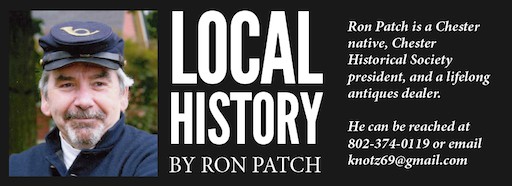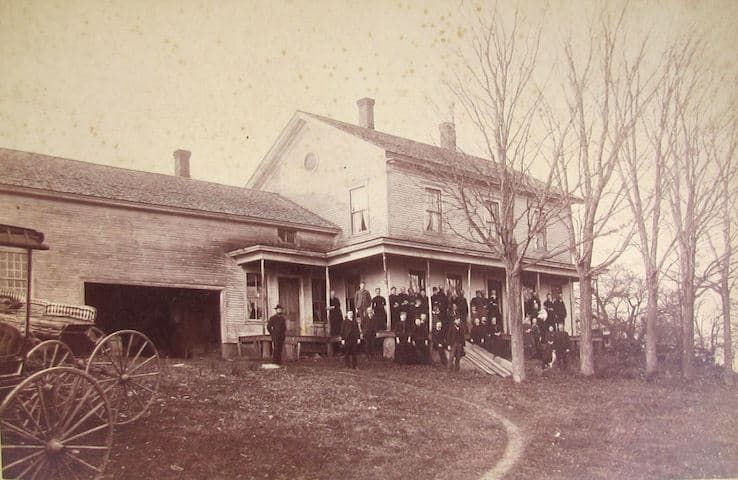
The photo with this article is the Skinner place on Dodge Road in Popple Dungeon. Virginia Blake Clark wrote much about this farm in her book, “The Source: Popple Dungeon, Vermont.”
“The Skinner family was on the farm by 1855 and remained for many years… The second home, which burned down in 1914, was built on the same location as the original. This was a very substantial wood house with 16 rooms and a carriage shed to the side. An interesting small round window let light into the attic. A large porch stretched across the front. Here one could sit and view the valley below. On a clear day looking southeast from the peak of the hill behind the house, Mount Manadnock in New Hampshire was visible.

“Two large barns were located across the road from the house. All three were lost to fire; the first barn in 1908, the house in 1914 and the second barn in 1938. The first to burn was the larger barn that sat down hill to the left of the house. The Bellows Falls Times, a weekly paper, reported in August 1908, ‘Last Thursday during one of the hardest thunder showers of the season Mr. Skinner, had a large barn struck by lightning and it burned together with 50 tons of hay and some farming tools. Mr. Skinner had just gotten his last load of oats as the shower approached. The barn was the largest in town and would accommodate 50 head of cattle.’
“The second barn, across from the house, burned in November of 1936 when Frank Blake owned the property. The family was called early in the evening and told that their barn was on fire. All who were alerted went as fast as possible to the hill, for the grass was very dry from drought. The barn was beyond saving, but considerable effort was spent putting out the fire that was racing down the hillside toward Chester. November is deer-hunting season in Vermont, and speculation was that the fire was caused by a hunter dropping a cigarette as he took shelter in the barn. With the loss of this barn all buildings on Farm A had now disappeared.
“A ten-acre orchard behind the house on Farm A produced a variety of apples through many years. On the open hillside sloping down to the valley, long stone walls divided three fields of eight, seven and thirty acres. Even today two very large stone piles are visible in the 30 acre field, proof of the long, backbreaking hours of labor to clear these fields…”
The orchard
When I was a boy in the early 1960s, I visited this property countless times. I lived on High Street. If I went to the end of High Street to Crocker’s Camp and continued on the old road I would end up at the Skinner place.
In those days, there were still apple trees producing apples. There was one apple tree about 20 inches in diameter. About four feet above the ground it divided into three trunks, each about eight inches in diameter. This created a comfortable saddle for sitting, complete with backrest. I spent many hours sitting here gazing at the views Virginia describes.
I remember one apple in particular. They were six inches in diameter. The skin color varied from blue to red to green. I brought one home once to show my mother. She called it a Blue Wolfgang. That may or may not be the real name.
Farmers have always adapted to changing markets. Beginning in the 1860s, farmers began buying apple trees to establish orchards. The railroad made shipping apples to Boston a profitable business.
In Child’s 1884 Windsor County Gazetteer I found this entry: “Skinner Harvey J., (Chester) r 60, dairy 16 cows, 10 head young stock, sugar orchard 250 trees, apple orchard 1,000 trees, and farmer 1,300 (acres).”
Bud Nadeau, Billy Parker, or Steve Waldo tagged along with me sometimes. In those days only four-wheel drive vehicles could pass.
I remember the Skinner cellar hole had large trees growing up out of it. A barn foundation was across the road. While I didn’t know the above history then, I felt it.
Study the photo. You’ll even see the round window Virginia mentions.
Virginia Clark’s Popple Dungeon book is available at Blair Books & More on the green in Chester. Jon Clark tells me Virginia just turned 99 and is doing well.
This week’s old saying: “Marry a rich person. Expect to work for the money.”